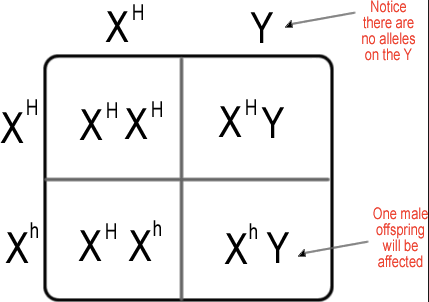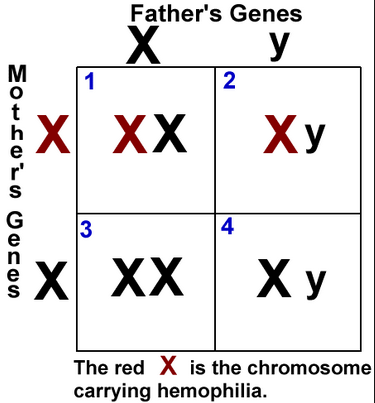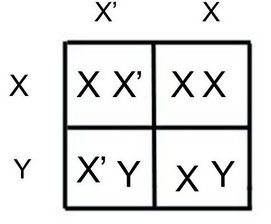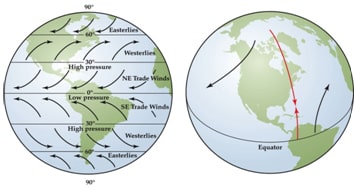(1) During two weeks before spring break, I taught my kids genetics. You probably remember learning a little bit of something about genetics in school; we inherit our traits from both our parents and there’s some probability involved in which traits we get. You probably remember that some traits are called “dominant” and some are called “recessive.” You might even remember this:
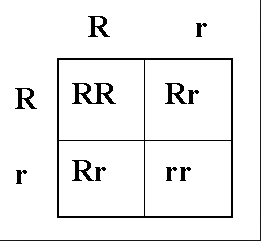
(2) That, my friends-turned-students, is a Punnett square. This one is a classic. It’s where we’ve crossed two heterozygous parents to predict what alleles their offspring will have.
(3) Now, there was a lot of vocabulary in that last sentence. So let me pause for a moment. When we’re considering the inheritance of a particular gene, we get one version of the gene from Mom and one version of the gene from Dad. This is true for humans and cats and bugs and pea plants. Each version of the gene is called an allele. In 99% of your cells, you have two alleles for every gene. (The other 1% are your sex cells, either sperm or eggs, depending on your biology.)
(4) We can define a person depending on which alleles they have. If they have two of the same allele, we call them homozygous (homo- means same). If they have two different alleles, we call them heterozygous (hetero- means different). These same roots show up in the words homosexual and heterosexual if that helps you remember them.
(5) So in that Punnet square above, I said both the parents were heterozygous for the “R” gene (whatever protein that might code for). In classic notation, we show that by using a capital R and a lowercase r. Also in this notation, we typically use the capital letter to notate a “dominant” trait and a lowercase letter to notate a “recessive” trait. To use our notation for someone who is homozygous dominant, we would write “RR.”
(6) (I could rant for quite a time about how the ideas of “dominant” and “recessive” are constructs that don’t really reflect our newer molecular understanding of gene expression. For now, just remember that in a heterozygote, the dominant trait “overpowers” the recessive trait and all you see is the dominant trait. It’s a usable construct for our purposes and this blog post is already way too long.)
(7) In order to fill out a Punnett square, you write one parent’s alleles across the top and one parent’s alleles down the left side. It doesn’t matter which parent goes where. Then you drag the top parent’s alleles down into each box. Last, you drag the left parent’s alleles across into each box. You should end up with two letters in each box.
(8) Now, most human traits are incredibly complicated in terms of their expression, so geneticists often use plants (or fruit flies) to talk about simpler patterns. So if I give a concrete example to the Punnett square above, I could say that we’re talking about red and white flowers, and that red is dominant to white. In that case, both of the parent flowers would be red. If we look at their offspring, each box represents a 25% chance that particular combination of alleles will be produced. So in terms of the genes, there is a 25% chance of getting an offspring with RR, a 50% chance of getting an offspring with Rr, and a 25% chance of getting an offspring with rr. This means a 75% chance of getting red flowers (remember both RR and Rr make red flowers) and a 25% chance of getting white flowers (you have to be rr to get white flowers).
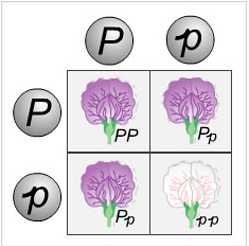
(9) Ok, this image used purple instead of red and P’s instead of R’s. But it’s the same heterozygote crossed with a heterozygote cross. Can you see how they’re the same concept?
Alright, I’m finally going to acknowledge that I did something truly bizarre with the format of this post. I numbered the first nine paragraphs. I know this has been bugging some of you the whole time! Here’s why. I just taught you a little bit of something about genetics, and now I want to explain how I did it and why genetics gets really complicated really fast. Being able to reference the paragraphs will make that much easier.
There are different kinds of information involved in teaching genetics. First, I gave you some conceptual underpinnings in paragraph three, when I talk about what an allele is and where we get them from. Paragraph four is also conceptual. In that paragraph, I’m telling you that it not only matters which alleles we have, but the combination of them is also important.
Concepts are super important. But we have to have a way to communicate them. So in paragraph five, I gave you a bunch of notation. This notation is really handy so we don’t have to write out huge DNA sequences to see the difference between alleles. In fact, this notation is older than our ability to sequence DNA! But one thing that’s really tricky for students is to keep concepts and notation linked. I hear students talking about big R’s and little r’s and I know they understand the notation, but I don’t necessarily know that they understand what those letters represent.
But that’s not all! In paragraph 7, I gave you procedural knowledge. I gave you steps to fill out a Punnett square. And this is typically what my students remember the best. They LOVE to fill out Punnett squares. They remember the steps, they can get it right, and it makes them feel confident. It also drives me absolutely nuts because most of those students have NO IDEA what a Punnett Square actually represents. They’ve completely lost the conceptual underpinnings.
Last year I had a student who was on the autism spectrum; I’ll call her Anna. For whatever reason, she could not stand Punnett squares. She’d built herself a sizable mental wall over them in middle school, and just the sight of one on the board could send her straight to tears. At first, I was completely bamboozled. Anna needed to be able to do Punnett squares! She needed to understand inheritance patterns!
A key moment of learning for me was realizing this: those two things are not the same thing, and only the second statement is true. Anna’s tablemates came up with an alternate format for creating all possible combinations of alleles from parents.
Anna had great success using this alternate format, and her tablemates told me (and their answers to a couple of key test questions told me) they really understood genetics a lot better. They had to rely on a conceptual understanding of alleles and inheritance to create a new format for combinations. They taught it to the whole class, and the whole class grew from the experience.
I’d like to point out quickly that it was my students who came up with the new format. I think I’d created a classroom culture that allowed this to happen; asking questions and trying stuff out was normal, and student ideas and collaborative learning were valued. But if it had been just me, Anna would’ve been stuck in the Punnett square cycle of despair forever.
This was my first window into separating my own thinking about genetics from a conceptual, notational, and procedural standpoint, and it was hugely informative. I saw kids getting so good at a procedure that they lost the concepts. This year I taught all my classes how to NOT use Punnett squares, much to their consternation!
But my students weren’t done teaching me things yet. This year gave me even further insight into this tangle of information that is genetics. That’s for a Part 2, coming on Wednesday!
Your homework: Can you think of an example of concepts and notation that is specific to another discipline? Do people (or you) place more importance on one than the other?
Hej då,
Jamie



